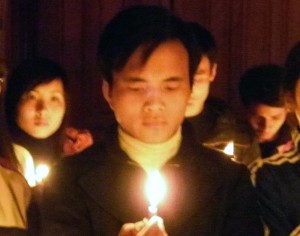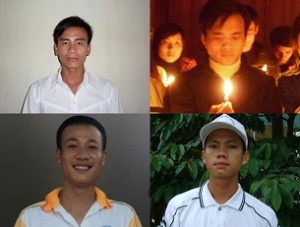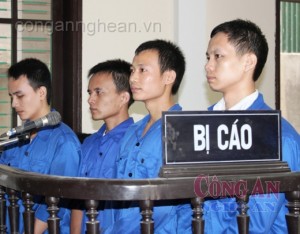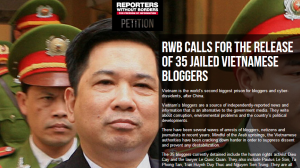Shangri-La Dialogue in Singapore provides a chance to tackle the threat of regional instability
This year’s annual Shangri-La Dialogue, held by the International Institute for Strategic Studies in Singapore, features Japanese Prime Minister Shinzo Abe as its keynote speaker. Perhaps not surprisingly, the summit will feature
discussions on conflict management, military-to-military cooperation, and, perhaps most noteworthy, the United States’ contribution to regional stability.
All of this comes after almost a month of tension between China and Vietnam when the former relocated one of its oil rigs inside Vietnam’s 200-mile exclusive economic zone. A series of anti-China protests and riotsseized Vietnam days after, resulting in the deaths of at least two Chinese citizens and forcing an exodus of thousands more, including many Taiwanese workers caught in the crossfire, forcing Hanoi to step in and quash further demonstrations.
This incident is but another chapter in the long-running South China Sea maritime and territorial disputes, itself one of many conflicts in Asia-Pacific.
On Nov. 23, China imposed an air defense identification zone, or ADIZ, over the East China Sea, which included the disputed Senkaku/Diaoyu Islands claimed by Japan and China. The move was immediately condemned by Japan and the United States with the latter dispatching a pair of unarmed B-52 bombers over the disputed islands, advertised as part of a planned exercise but undoubtedly a challenge to China’s assertions.
For Japan and Prime Minister Abe, the annual Shangri-La Dialogue provides an opportunity to engage attending state representatives on the risks posed by such disputes. Indeed, it is expected that Prime Minister Abe will use his keynote address to promote his country’s partnership with the United States, together a force for advancing regional security cooperation.
It will, of course, be up to Prime Minister Abe to assuage fears and convince his opponents in government and throughout Asia-Pacific to embrace his vision of a proactive Japan. In a region where memories are long, and where Japan’s actions and crimes during the Second World War have not been forgotten, Prime Minister Abe will have much work ahead of him.
To this end, despite Japanese concerns over its country’s role in any collective defence, such an alliance between nations may foster healing and understanding. For these countries, unified in their desire to preserve regional security and stability, collective defence might just be what is required to maintain said stability.
Established and activated at Ent Air Force Base, Colorado, on September 12, 1957, the North American Aerospace Defense Command (originally titled “North American Air Defence”), or NORAD, integrated the air defense operations of the United States and Canada into a joint-military organization responsible for defending and warning against aerospace threats to North America. Although fears of Soviet incursions into North American airspace have since passed with the conclusion of the Cold War, the bi-national organization remains relevant and active today against potential terrorist threats.
The North Atlantic Treaty Organization, or NATO, formed following the Second World War in part to deter Soviet expansionism but also to prevent those conditions that led to the world war that devastated Europe. To this end, it was hoped that a North American presence, specifically the United States, in Europe, and European integration would deter nationalist militarism. The North Atlantic Treaty was signed on April 4, 1949, and continues to this day.
Specific to Europe are the various military initiatives of the European Union, such as Eurofor, Eurocorps, and the European Gendarmerie Force, among others. Although each initiative differs in terms of role and military composition from member states (from bi-national to multinational initiatives), they nevertheless serve to safeguard the EU.
However, not all defence alliances succeeded. Perhaps most pertinent (and rather unfortunate) for countries in Asia-Pacific is the story of SEATO.
The Southeast Asian Treaty Organization was formed along similar lines as NATO on September 8, 1957, with the signing of the Southeast Asia Collective Defense Treaty, or Manila Pact. It was largely an American creation and lacked the language found in NATO (especially Article 5, which declared an attack against one treaty member was an attack against all treaty members), as well as organizational support and command structure necessary. Consequently, SEATO expired on June 30, 1977<.
Regardless, SEATO’s failure should not discourage further attempts at collective defence in Asia-Pacific, never mind Southeast Asia. Lessons have been learned, and, if nothing else, today, there still exists a need for unity in the face of shared concerns.
The importance of collective defence cannot be understated. More than just strength in numbers, increased military-to-military cooperation allows for greater transparency between state leaders and their government, and reduces the potential of any misunderstanding that could spiral into an unnecessary conflict.
NORAD, NATO, and the many European Union military initiatives were born from a need to address a specific threat or concern. These are not the templates from which any future collective defence organization in Asia-Pacific should borrow, but they may be used as inspiration for what can happen when state leaders work together.
Khanh Vu Duc is a lawyer and part-time law professor at the University of Ottawa and frequent contributor to Asia Sentinel. Duvien Tran is a special research associate at VDK Law Office in Ottawa
Height Insoles: Hi, I do believe this is an excellent site. I stumbledupon …
http://fishinglovers.net: Appreciate you sharing, great post.Thanks Again. Keep writi…
Achilles Pain causes: Every weekend i used to pay a quick visit this site, as i w…






June 1, 2014
New Asia-Pacific Collective Defense Needed
by HR Defender • [Human Rights]
Written by Khanh Vu Duc and Duvien Tran
ASIA SENTINEL | FRI, 30 MAY 2014
Shangri-La Dialogue in Singapore provides a chance to tackle the threat of regional instability
All of this comes after almost a month of tension between China and Vietnam when the former relocated one of its oil rigs inside Vietnam’s 200-mile exclusive economic zone. A series of anti-China protests and riotsseized Vietnam days after, resulting in the deaths of at least two Chinese citizens and forcing an exodus of thousands more, including many Taiwanese workers caught in the crossfire, forcing Hanoi to step in and quash further demonstrations.
This incident is but another chapter in the long-running South China Sea maritime and territorial disputes, itself one of many conflicts in Asia-Pacific.
On Nov. 23, China imposed an air defense identification zone, or ADIZ, over the East China Sea, which included the disputed Senkaku/Diaoyu Islands claimed by Japan and China. The move was immediately condemned by Japan and the United States with the latter dispatching a pair of unarmed B-52 bombers over the disputed islands, advertised as part of a planned exercise but undoubtedly a challenge to China’s assertions.
For Japan and Prime Minister Abe, the annual Shangri-La Dialogue provides an opportunity to engage attending state representatives on the risks posed by such disputes. Indeed, it is expected that Prime Minister Abe will use his keynote address to promote his country’s partnership with the United States, together a force for advancing regional security cooperation.
It will, of course, be up to Prime Minister Abe to assuage fears and convince his opponents in government and throughout Asia-Pacific to embrace his vision of a proactive Japan. In a region where memories are long, and where Japan’s actions and crimes during the Second World War have not been forgotten, Prime Minister Abe will have much work ahead of him.
To this end, despite Japanese concerns over its country’s role in any collective defence, such an alliance between nations may foster healing and understanding. For these countries, unified in their desire to preserve regional security and stability, collective defence might just be what is required to maintain said stability.
Established and activated at Ent Air Force Base, Colorado, on September 12, 1957, the North American Aerospace Defense Command (originally titled “North American Air Defence”), or NORAD, integrated the air defense operations of the United States and Canada into a joint-military organization responsible for defending and warning against aerospace threats to North America. Although fears of Soviet incursions into North American airspace have since passed with the conclusion of the Cold War, the bi-national organization remains relevant and active today against potential terrorist threats.
The North Atlantic Treaty Organization, or NATO, formed following the Second World War in part to deter Soviet expansionism but also to prevent those conditions that led to the world war that devastated Europe. To this end, it was hoped that a North American presence, specifically the United States, in Europe, and European integration would deter nationalist militarism. The North Atlantic Treaty was signed on April 4, 1949, and continues to this day.
Specific to Europe are the various military initiatives of the European Union, such as Eurofor, Eurocorps, and the European Gendarmerie Force, among others. Although each initiative differs in terms of role and military composition from member states (from bi-national to multinational initiatives), they nevertheless serve to safeguard the EU.
However, not all defence alliances succeeded. Perhaps most pertinent (and rather unfortunate) for countries in Asia-Pacific is the story of SEATO.
The Southeast Asian Treaty Organization was formed along similar lines as NATO on September 8, 1957, with the signing of the Southeast Asia Collective Defense Treaty, or Manila Pact. It was largely an American creation and lacked the language found in NATO (especially Article 5, which declared an attack against one treaty member was an attack against all treaty members), as well as organizational support and command structure necessary. Consequently, SEATO expired on June 30, 1977<.
Regardless, SEATO’s failure should not discourage further attempts at collective defence in Asia-Pacific, never mind Southeast Asia. Lessons have been learned, and, if nothing else, today, there still exists a need for unity in the face of shared concerns.
The importance of collective defence cannot be understated. More than just strength in numbers, increased military-to-military cooperation allows for greater transparency between state leaders and their government, and reduces the potential of any misunderstanding that could spiral into an unnecessary conflict.
NORAD, NATO, and the many European Union military initiatives were born from a need to address a specific threat or concern. These are not the templates from which any future collective defence organization in Asia-Pacific should borrow, but they may be used as inspiration for what can happen when state leaders work together.
Khanh Vu Duc is a lawyer and part-time law professor at the University of Ottawa and frequent contributor to Asia Sentinel. Duvien Tran is a special research associate at VDK Law Office in Ottawa